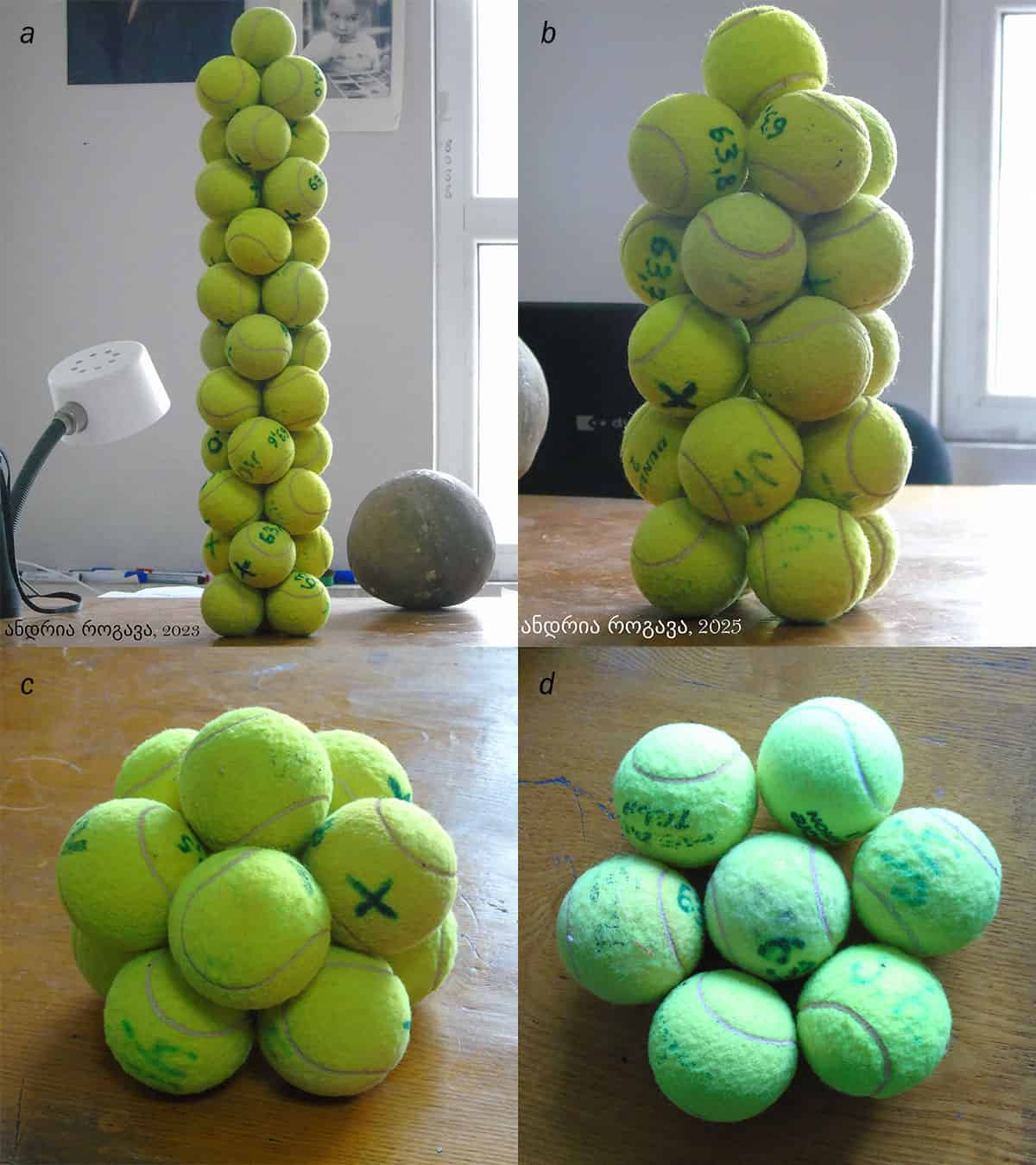Scientists Think They’ve Found the Region of the Brain That Regulates Conscious Perception
.jpg)
.jpg)

More states are lining up in a bid to host NASA’s headquarters, but the prize they seek may turn out to be smaller than they expect.
The post States bid to host a revamped NASA headquarters appeared first on SpaceNews.




In the Senate hearing considering the confirmation of Jared Isaacman as NASA Administrator, he and Senator Ted Cruz engaged in extensive dialogue about China. They strongly expressed the view that […]
The post Moon, Mars — China leads to both appeared first on SpaceNews.



A few years ago, I wrote in Physics World about various bizarre structures I’d built from tennis balls, the most peculiar of which I termed “tennis-ball towers”. They consisted of a series of three-ball layers topped by a single ball (“the locker”) that keeps the whole tower intact. Each tower had (3n + 1) balls, where n is the number of triangular layers. The tallest tower I made was a seven-storey, 19-ball structure (n = 6). Shortly afterwards, I made an even bigger, nine-storey, 25-ball structure (n = 8).
Now, in the latest exciting development, I have built a new, record-breaking tower with 34 balls (n = 11), in which all 30 balls from the second to the eleventh layer are kept in equilibrium by the locker on the top (see photo a). The three balls in the bottom layer aren’t influenced by the locker as they stay in place by virtue of being on the horizontal surface of a table.
I tried going even higher but failed to build a structure that would stay intact without supporting “scaffolds”. Now in case you think I’ve just glued the balls together, watch the video below to see how the incredible 34-ball structure collapses spontaneously, probably due to a slight vibration as I walked around the table.
Even more unexpectedly, I have been able to make tennis-ball towers consisting of layers of four balls (4n + 1) and five balls too (5n + 1). Their equilibria are more delicate and, in the case of four-ball structures, so far I have only managed to build (photo b) a 21-ball, six-storey tower (n = 5). You can also see the tower in the video below.
The (5n + 1) towers are even trickier to make and (photo c) I have only got up to a three-storey structure with 11 balls (n = 2): two lots of five balls with a sixth single ball on top. In case you’re wondering, towers with six balls in each layer are physically impossible to build because they form a regular hexagon. You can’t just use another ball as a locker because it would simply sit between the other six (photo d).
The post Tennis-ball towers reach record-breaking heights with 12-storey, 34-ball structure appeared first on Physics World.

Members of a NASA safety panel said they were “deeply concerned” about the safety of the aging International Space Station, citing long-running issues and funding shortfalls.
The post NASA safety panel warns of increasing risks to ISS operations appeared first on SpaceNews.







Even as NASA and its partners on the ISS shift to commercial space stations, NASA’s former deputy administrator believes there will still be a role for multilateral coordination.
The post Multilateral coordination will be needed for commercial space stations appeared first on SpaceNews.


In this week's episode of Space Minds, Bill Nye, CEO of the Planetary Society sits down with host David Ariosto. The conversation starts with Bill's journey but quickly pivots to the proposed science budget cuts at NASA.
The post Bill Nye on NASA budget cuts & key space issues appeared first on SpaceNews.

L3Harris announced a $125 million expansion at its space manufacturing site in Fort Wayne, Indiana.
The post L3Harris expands space manufacturing as companies vie for position in ‘Golden Dome’ appeared first on SpaceNews.

A key player in the European DeepTech market and a leading Polish space technology company, Creotech Instruments S.A., has signed the largest contract with the European Space Agency (ESA) to […]
The post Creotech Instruments secures €52 million ESA contract to build Polish satellite constellation CAMILA appeared first on SpaceNews.

The document, titled “Space Warfighting: A Framework for Planners,” outlines how U.S. forces might assert control of the orbital high ground
The post U.S. Space Force lays out battle plan for space in new ‘warfighting’ guide appeared first on SpaceNews.